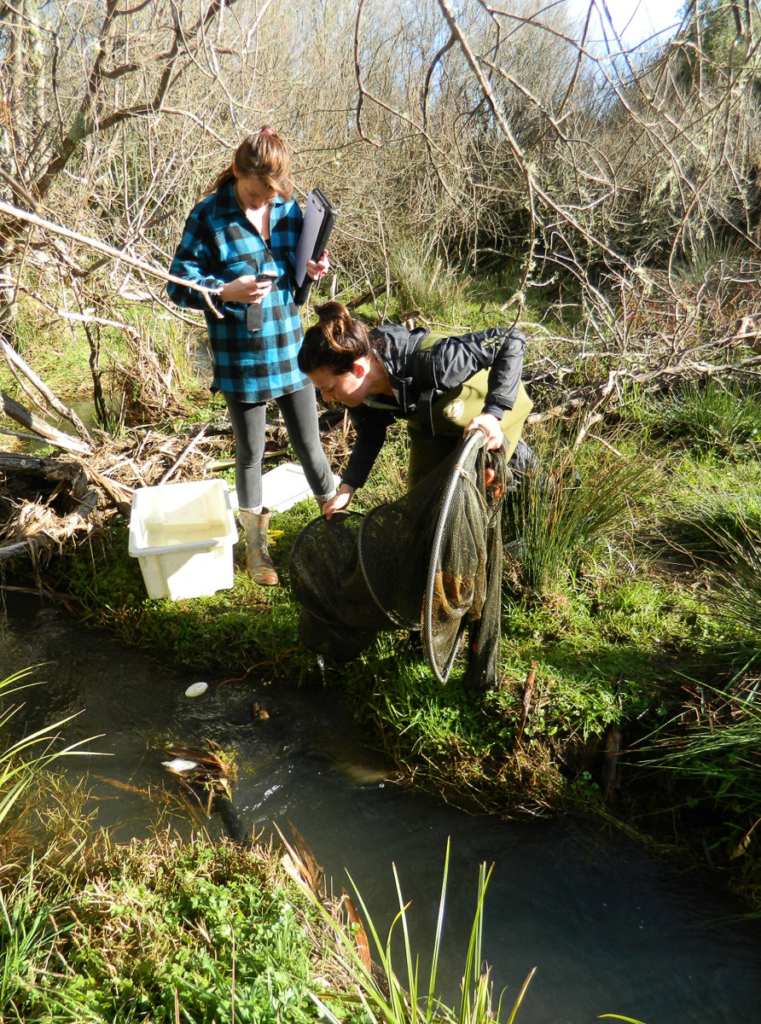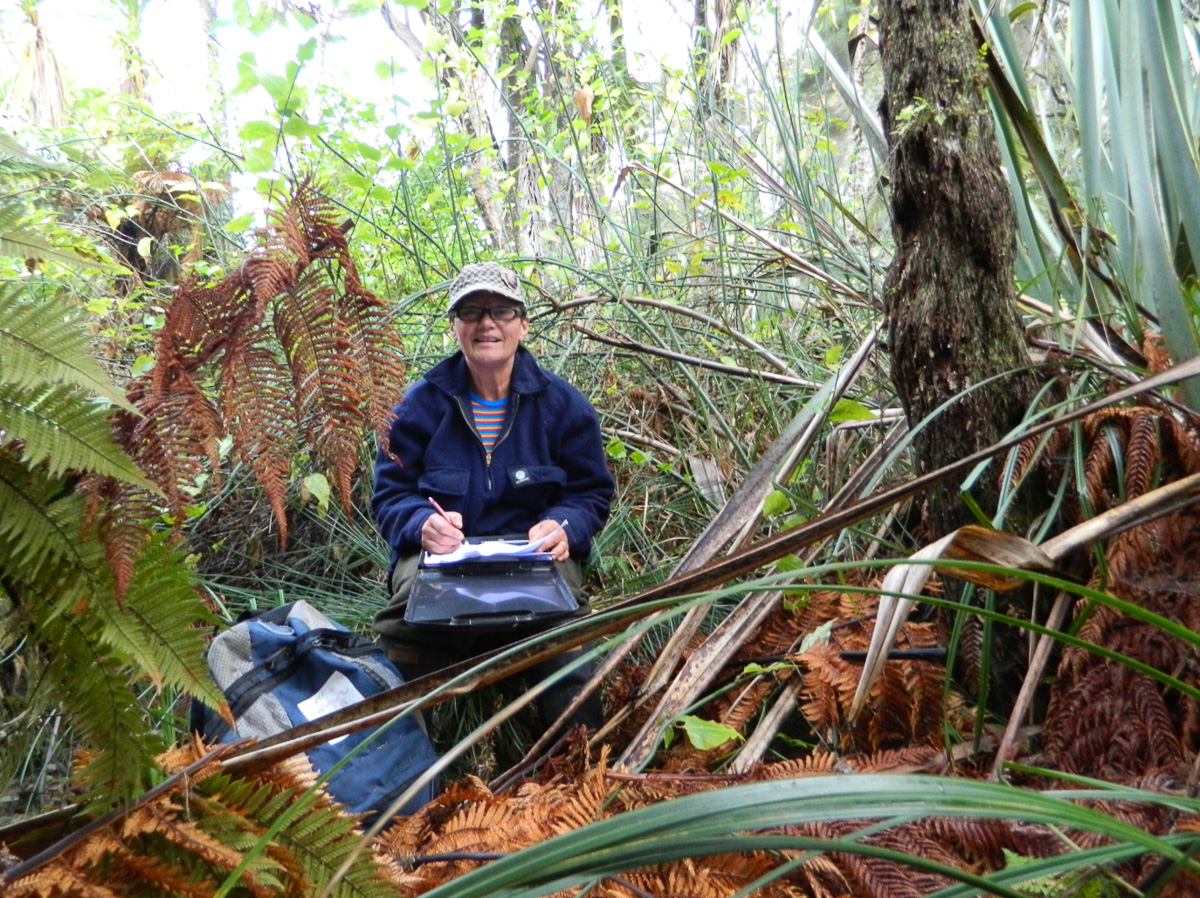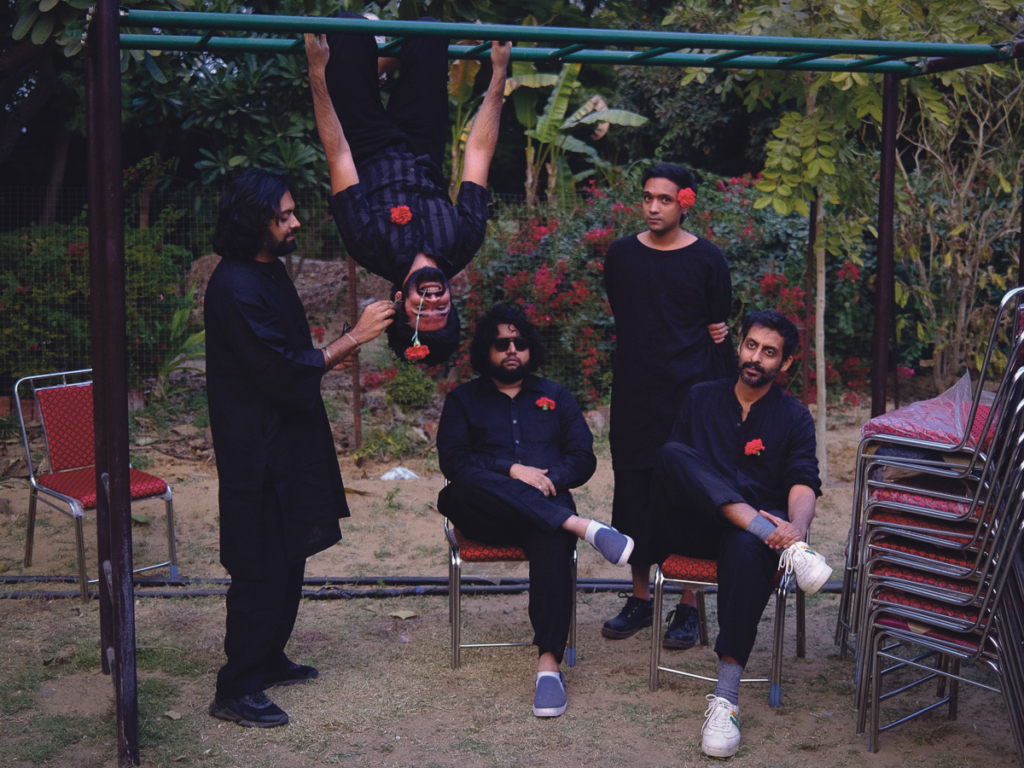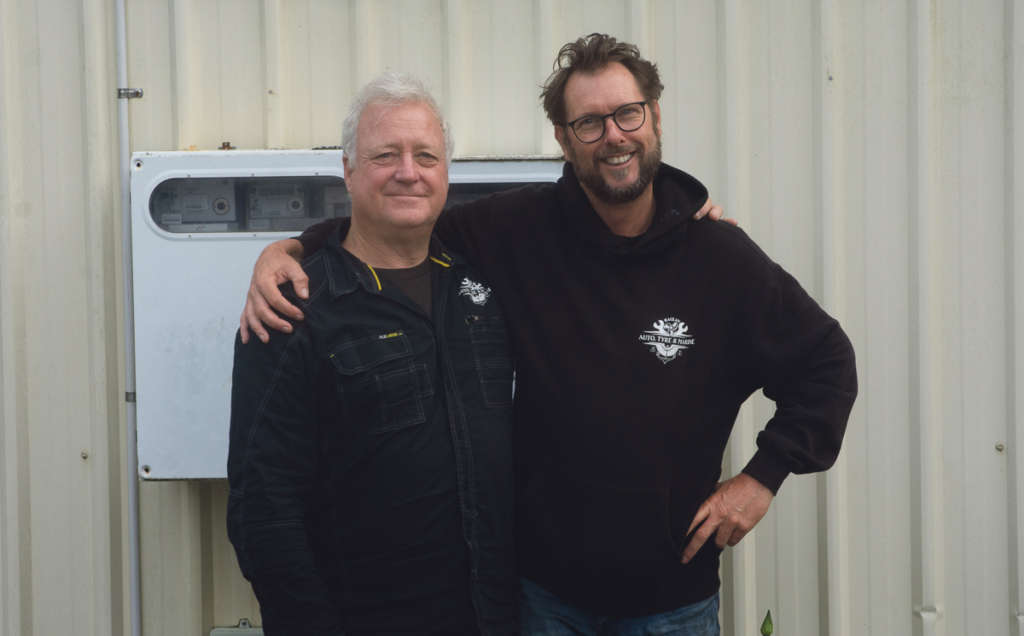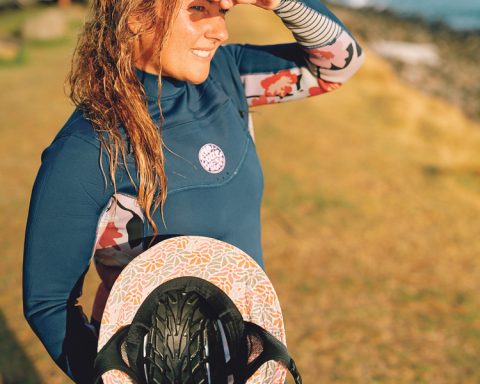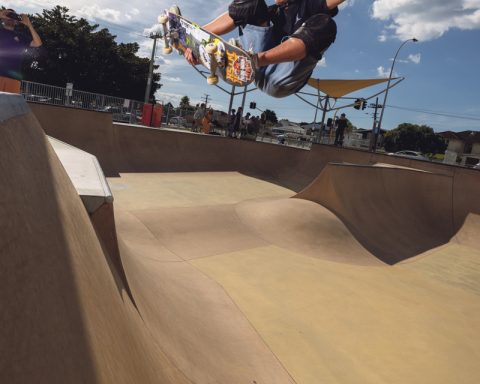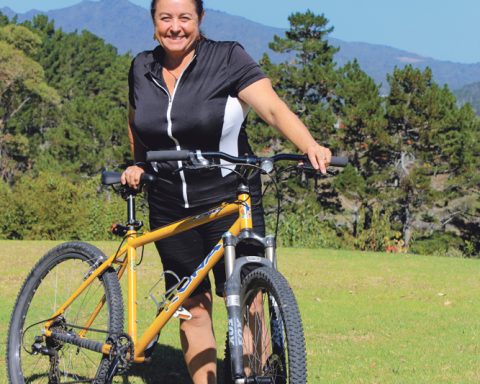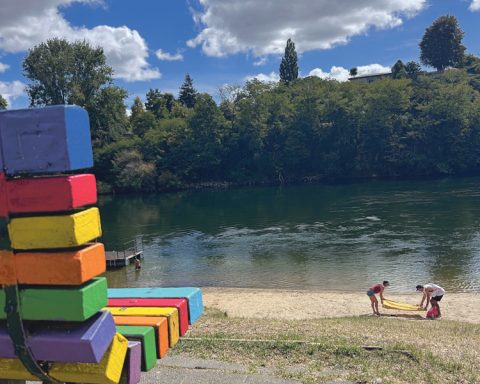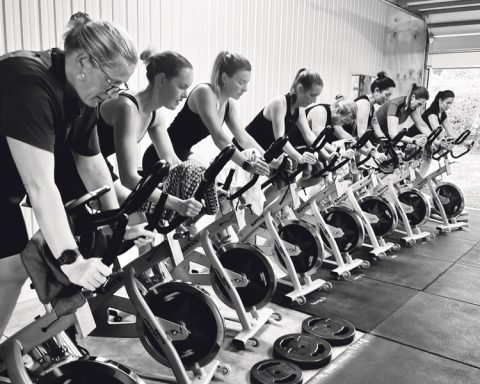I had the opportunity to learn about Toreparu wetland, a 223ha hidden ecological gem on the coast nestled between Karioi maunga and Aotea harbour, 20 minutes from Raglan. This is an intergenerational project that is in collaboration with hapū, freshwater experts, landowners, key organsations and the community.
Mahuru Wilcox a Raglan local and wetland specialist of Ngati Ranginui and Ngati Awa descent and Taruke Thomson hapu representative, Ngati Whakamarurangi, shared their knowledge of Toreparu and their involvement in the work being undertaken.
I know that you have done a considerable amount of work with hapu on the restoration of the Toreparu Wetland, can you share some of that journey? – Mahuru
The journey has definitely been a collaborative one! None of the mahi I have contributed would have been possible without the support, incredible knowledge and vision of Ngāti Whakamarurangi, particularly Taruke.
I had spent a lot of time in the area, growing up, and out at the Thomson whānau farm at Te Mākaka, and then when Taruke and my mum bought their farm on the south-eastern edge of Toreparu. It wasn’t until I got interested in freshwater and wetland ecology that I could appreciate what a gem of a place it is, and its ecological value. I did my MSc on how mātauranga Māori and science work together to assess health of wetlands. With the support of Taruke and Mōtakotako marae, I got a whole different appreciation of Toreparu, through hearing the long history of the hapū with the repo and a different way of understanding “value”. The journey is an ongoing one and we are in the process of setting up a Trust so we can receive funding for restoration, predator control and the supporting the hapū and community to reach their aspirations for a healthy and thriving repo, for many generations to come.
How significant is the Toreparu to this area? – Mahuru
I can only speak about this from an ecological perspective as Taruke is the expert on its significance for Ngāti Whakamarurangi. Ecologically it’s a real hotspot! For context, the Waikato region has lost over 75% of its wetland, with most of the remaining ones being peatlands in the Hauraki and Meremere areas. Swamps, like Toreparu were not very common in the region, and at 223ha, Toreparu is one of the largest intact ones on the west coast. Its home to a number of rare and threatened plants and animals, including native fish, eels, swamp maire, hūrepo (Australasian bittern) and other wetland birds, and last summer we discovered something very exciting…native long-tailed bats! So it really is an ecological gem, in desperate need of pest control and restoration, to sustain these special species. Aside from these species, the Toreparu provides an essential role in the environment, filtering water that comes from a number of streams, ensuring clean and clear water when it reaches the sea. Swamps help reduce and hold sediment, and create a buffer which takes up excessive nutrients from the surrounding farmland run off. All these things lead to ocean acidification and algal blooms if wetlands aren’t there to do their job. They also help buffer the effects of climate change by slowing water in floods, and holding water in droughts. Wetlands are amazing and I wish more people cared about them!
As for its importance of Toreparu for Ngāti Whakamarurangi, I’ll pass over to Taruke.
Taruke: Toreparu Wetland is considered a significant site for us as tangata whenua and is marked by three boundary markers, Te Kōwhatu, Te Ruataniwha and Te Kaitiaki. In the northern end of the wetland is Horokawau, a significant waterfall and fish ladder which native fish use to climb further up the catchment to Karioi.
Toreparu is rich in cultural history with numerous pā (fortified habitation) and kāinga (village) sites overlooking the wetland, which was considered an abundant food and resource basket by our people. There were once two large pā tuna (eel weirs), Te Kōkiri and Te Awa a Heketoru, which provided a reliable source of food, along with locations within the Toreparu that were used for setting hīnaki (nets). Along with historical information, tangata whenua from Mōtakotako have specific sites where other resources such as food, weaving materials, dyes, rongoa (medicines), and water for different rituals were and still are collected.
Ngāti Whakamarurangi have identified the loss of indigenous vegetation, weed invasion, land management practises, stock access and declines in water quality as being key issues affecting the health and function of the wetland, and we are working with landowners, local council, DoC and others like Mahuru to turn things around. Toreparu was once an integral part of the lives of tangata whenua, but this has reduced as land ownership changed and connection with the Toreparu has been compromised. As a result, hapū were separated from the Toreparu and today most members have little knowledge about the poor state of the wetland and the challenges of restoring it. By restoring and doing mahi in and around Toreparu, reconnection and that knowledge can be strengthened once again.
How do you incorporate Mātauranga Māori in the work you do? Why is it important? – Mahuru
It is essential! I see the future as being a collaborative one, where the role and knowledge of kaitiaki is given the respect and support it deserves. Tangata whenua know their lands better than any of us and are invested in its health for generations to come. Caring for taiao is an intergeneration thing, not just a 1-5yr project. That’s not to say that science and other tools are not useful. There is a role for other tools and knowledge systems if it aligns to the shared vision of local iwi/ hapū and community. For too long we have used outside tools to guide our understanding and vision for Aotearoa…and where are we now? Close to ecological collapse in many areas with rivers and streams that are unswimmable, our own harbour that has constant warnings for pollution and shellfish poisoning, taonga species disappearing at a very alarming rate and humanity which is so disconnected from the world around us, and each other. Indigenous knowledge and mātauranga is grounded in connection, generations of observation, sustainable use of resources, and reciprocity.
We have so much to learn from mātauranga Māori and tangata whenua, and I really see my role as a researcher and scientist as hearing the problem, what the goal is, and pulling in tools that can help reach that goal. This includes science but also development of mātauranga-based tools and using existing tools like the Wetland Cultural Health Indicator, for example.
What are your thoughts on climate change and the impact that it may have on our wetlands? – Mahuru
Wetlands are essential pieces of the climate change puzzle. I mentioned before, but they act as a buffer to extreme weather events. Nationally, with 95% of wetlands having being lost to drainage, development, land-use effects within the catchment etc, we see what happens when there are floods and drought. For example, when forests and wetlands are lost in the upper catchment, you get huge sedimentation issues when floods happen. We saw this in Hawkes Bay and the east coast after cyclone Gabrielle. When town planners approve development on current or historic wetland areas, these areas are completely flooded in heavy rainfall events, as we saw in Auckland in January. As we think forward to a future where the climate may look very different, we need to develop restoration plans that are both resilient and adaptable, so our wetlands can thrive and balance can be restored.
What are the future plans for the Toreparu and how can our community support this work? – Mahuru
We are in the process of starting a Trust so we can receive funding for pest control, weed control and other restoration activities. Keep an eye out on the Toreparu Hūrepo Facebook or Instagram pages where we post updates on what we are up to. Once the trapping network has been established, we will be looking for volunteers to help maintain traplines. Similar to what Karioi Project are doing! So any keen people, especially those in the Te Mata and Aotea areas can get out and enjoy this amazing place. We are currently undertaking a research project with Ngāti Whakamarurangi, to develop a resilient restoration plan for Toreparu, to take into account climate change and how the community plan for this. And of course, the local landowners are doing awesome mahi fencing off their edges of the repo (swamp) andundertaking planting and weed control. It’s a huge project but so many people are positive and behind the idea, so we are really excited to get stuck into it!
interview with Mahuru Wilcox and Taruke Thomson
Interview by: Lisa Thomson from Whāingaroa/Raglan Climate Action
